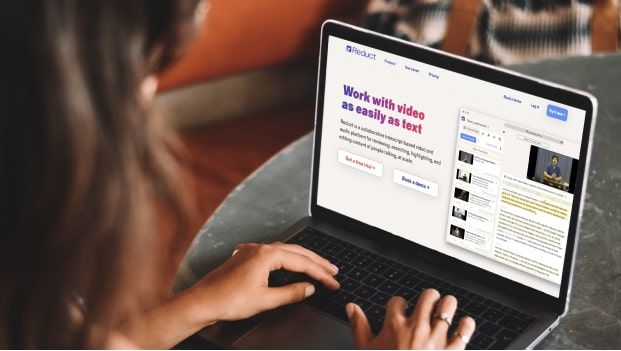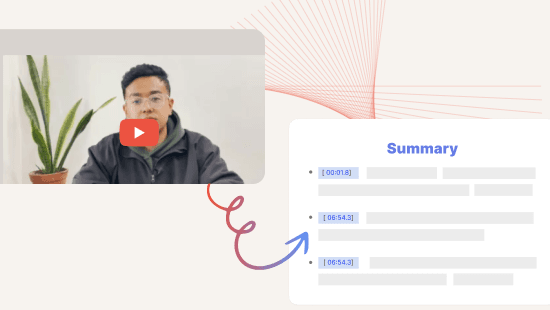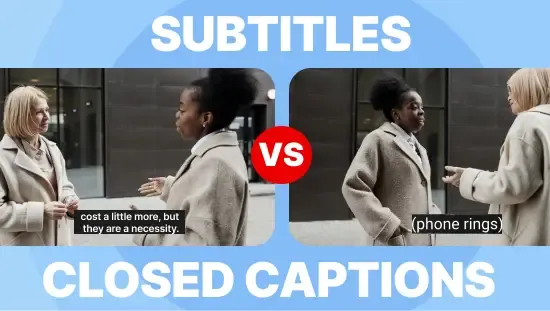5 Industries that Benefit from Text-Based Video Editing
June 2023
·
5 min read

As a video content creator, I often find the actual process of editing to be overwhelming, particularly with unscripted footage. Dealing with a large number of videos often means I'm stuck at my desk for hours, working to create a one-minute end result. It's a tedious and exhausting process that I am sure many of you can relate to.
But it doesn't have to be this way.
You heard me right! Text-based video editing is emerging as a game-changing approach to creating and editing videos.
Even industry giants Adobe have recognised this revolution and recently introduced text-based video editing functionality in Premiere Pro earlier this year, creating quite a buzz among video professionals. However, believe it or not, text-based video editing has been around for a while, and is ready to disrupt your workflow for the better. In this blog post, we will delve into how five diverse industries - marketing, legal, user research, education and filmmaking - can streamline their workflows and enhance productivity using text-based video editing.
But first, what is text-based video editing?
Simply put, text-based video editing allows you to edit videos by editing text. By working with the transcript of the video, you can make edits to the media itself. It enables editing videos without the need for extensive manual scrubbing, or searching on the timeline. Learn more here!
5 industries that can benefit from text-based video editing
1. Marketing
Finding the right balance between creativity and efficiency is what I struggle with the most. I am eager to let my creativity flow and produce engaging videos, but the tight timeframes I work with often make it incredibly hard to achieve that.
That is why text-based video editing is so valuable to me.
With text-based video editing at my fingertips, I can now do the mundane and time consuming activities such as reviewing, loggin, trimming, and editing the raw footage easily - in a fraction of the time it used to take me.
See an example where I repurposed a two hour long video into a minute long video in just 5 minutes. Check it out!
Text-based video editing has sped up my editing process, allowing me to focus on the more creative aspects of my video content creation.
Here are other features of text-based video editing that marketing professionals can benefit from:
2. Legal
Video evidence and deposition recordings play a crucial role in evoking emotions and conveying messages with clarity - which can be crucial at trial.
However, many lawyers and small law firms avoid using it because of the time, money and technical skill needed to use a video editing tool. Unlike big law firms who may have dedicated video editing teams or work with freelancers, smaller law firms find it challenging.
Text-based video editing tools automatically transcribe video evidence, allowing legal professionals to locate key moments by search - all without hours of tedious rewatching.
With text-based video editing tools like Reduct, legal professionals can now easily edit the video by simply editing the text.
Now imagine the impact that every legal professional can have on their cases, all while saving them valuable time and streamlining their process of preparing evidence.
3. User Research
User researchers are often overwhelmed by large amounts of qualitative data from user interviews and sessions. Synthesizing the raw interviews and presenting their insights in an impactful yet clear manner to the stakeholders can be a cumbersome process.
Text-based video editing tools like Reduct makes this smooth and easy. Reduct automatically generates transcriptions from the video, which the researchers can use to find keywords and highlight and organize them using tags. User researchers can easily search through hours of video, in just seconds. This makes it possible for the user researcher to rapidly create clips that accurately showcases the message and the emotions of the user, and present their findings to stakeholders in impactful ways.
Moreover, researchers can collaborate and work simultaneously on the transcript, and make edits and comments.
Listen to Mira Rao, Research Director at BlinkUX’s journey with Reduct!
4. Education
With the rise of remote and hybrid cultures across our society, students are increasingly accustomed to learning from the comfort of their own homes - either instead of or in addition to in-person classes on campus. But educational institutions and educators often struggle to prepare materials and deliver learning experiences that live up to expectations, in part due to a lack of technical skills and the right tools.
By adapting text-based video editing tools such as Reduct, educational institutions can enhance their remote learning offerings. It allows professors, TAs, and support staff to easily prepare class and lecture recordings, without the need for specialized skills or experience editing video.
With text-based tools, educators can now repurpose their existing lecture materials, working in a medium they are comfortable with - text! They can also quickly and easily search through transcribed lectures - even across tens or hundreds of hours of footage - to find relevant clips and combine them in new ways.
Text-based video editing also enables education institutions to make their lectures more accessible. Subtitle accompanying video content makes the material consumable for students with hearing impairments. This is not just a best practice, but in some cases may be required for compliance reasons!
Furthermore, universities, colleges, and other educational institutions can quickly and easily pull clips from particularly engaging lectures and create marketing materials from them, without creating an additional burden for busy teaching staff. Repurposing content in multiple ways and for different audiences allows organizations to get more value from the recordings they already have at hand.
5. Filmmaking
Highly skilled video editors abound in the world of professional filmmaking, working across commercial, TV, and the movie screen. At first glance, it may seem that text-based editing, seemingly aimed at beginners, might not be relevant to proficient professionals. However, text-based editing can helo optimize the workflow of even the most expert editors, and make the filmmaking process quicker and more efficient.
This can reduce the burden of some of the most tedious parts of the process - logging and reviewing footage - and allow editors to focus where their skills are put to best use: telling impactful stories. Reduct's interactive transcript synced to the raw footage can modernize a process nobody involved enjoyes.
With text-based video editing, there is no longer a need for logging video timestamps. With synced transcripts, videos become searchable, making the process of creating a rough cut quick and easy.
With text-based video editing, editors, producers, and other collaborators can easily pinpoint specific sections of the footage by highlighting text and leaving comments. This brings members of team into the process earlier, avoiding surprises later on. Getting comments and feedback earlier in the process eliminates the need for frustrating email chains or phone calls, which can save substantial time.
The easy learning curve of Reduct allows filmmaking teams to integrate this new tool into their existing workflow.
Learn more about how Reduct can be used by filmmakers.
This is just the start! Other industries can benefit from text-based video editing, too.
🎤 Journalism
🏥 Healthcare
🛫 Travel and Tourism
📞 Customer support

